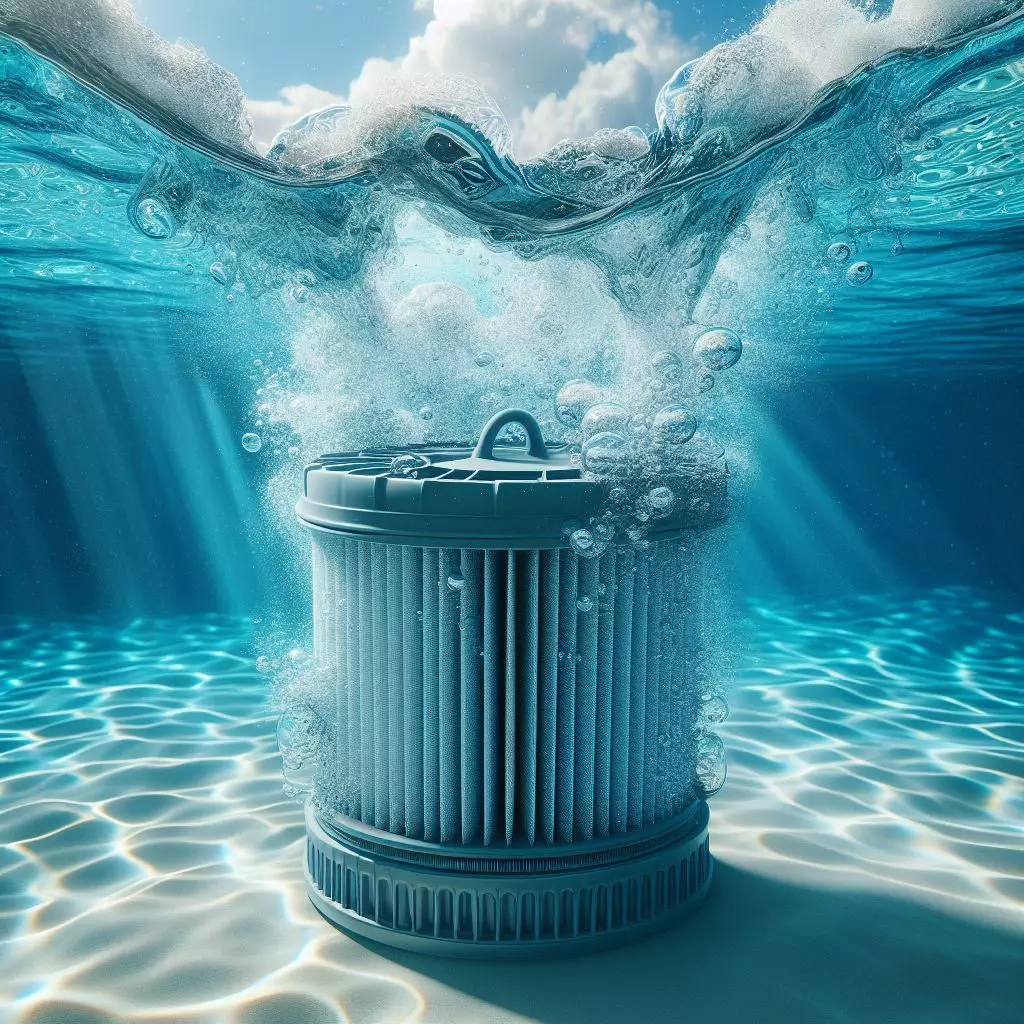Whether you are purchasing a pool filter for the first time or upgrading your existing filter, choosing the right size and type can be overwhelming. This article will guide you through the steps to select the appropriate pool filter size and type, ensuring you enjoy clear and healthy pool water. We will discuss calculating pool volume, determining pump turnover rate, choosing filter media, and filter types, along with additional critical information to help you make an informed decision.

1. Calculating Pool Volume
Before selecting a new pool filter, it is crucial to determine the total volume of your pool. Understanding how much water your pool holds will help you choose the appropriate filter size. Here are the methods to calculate the volume for various pool shapes:
1.1 Rectangular or Square Pools
For rectangular or square pools, the volume is calculated by multiplying the pool’s length by its width, then by the average depth, and finally by 7.5. Each step quantifies a dimension of the pool:
- Length: The distance from one end of the pool to the other.
- Width: The distance from one side of the pool to the other.
- Depth: The average depth of the pool.
- 7.5: A constant used to convert cubic feet to gallons.
1.2 Round or Circular Pools
For round or circular pools, the volume is calculated by multiplying 3.14 by the square of the radius, then by the depth, and finally by 7.5:
- Radius: The distance from the center of the pool to the edge.
- Depth: The average depth of the pool.
- 3.14: Pi, used to calculate the area of a circle.
- 7.5: Used to convert cubic feet to gallons.
1.3 Oval or Rounded Rectangle Pools
For oval or rounded rectangle pools, the volume is calculated by multiplying 3.14 by the length, by the width, by 0.25, then by the depth, and finally by 7.5:
- Length: The longest side of the pool.
- Width: The widest side of the pool.
- 0.25: A constant to adjust the calculation for the oval shape.
- Depth: The average depth of the pool.
- 7.5: Used to convert cubic feet to gallons.
1.4 Kidney-Shaped Pools
For kidney-shaped pools, the volume is calculated by measuring the two widest points (called width A and width B), then adding them together, multiplying by the length of the pool, then by 0.45, by the depth, and finally by 7.5:
- Width A and Width B: The two widest points of the kidney-shaped pool.
- Length: The longest side of the pool.
- 0.45: A constant to adjust the calculation for the kidney shape.
- Depth: The average depth of the pool.
- 7.5: Used to convert cubic feet to gallons.
1.5 Irregularly Shaped Pools
For irregularly shaped pools, an approximate volume can be calculated by multiplying the pool’s length by its width, then by its depth, and finally by 5.9:
- Length: The longest side of the pool.
- Width: The widest side of the pool.
- Depth: The average depth of the pool.
- 5.9: A constant used to approximate the volume in gallons.
2. Determining Pump Turnover Rate
The filter and pump of a pool must work in tandem. Therefore, determining the pump turnover rate before choosing a new filter is crucial. The turnover rate is the time it takes for the pump to completely circulate all the water in the pool. Typically, pumps need 8 to 10 hours to complete this process. Use the following methods to determine the minimum turnover rate:
2.1 Turnover Rate (Gallons per Hour)
First, calculate the gallons per hour (GPH) by dividing the pool’s total volume by the desired turnover time (usually 8 to 10 hours):
- Pool Volume: Measured in gallons.
- Hours: The time needed for the pump to circulate the pool water once.
For example, if the pool volume is 20,000 gallons and the ideal turnover time is 8 hours, the turnover rate is 20,000 divided by 8, which equals 2,500 gallons per hour.
2.2 Turnover Rate (Gallons per Minute)
Next, divide the gallons per hour by 60 to calculate the gallons per minute (GPM):
- Gallons per Hour: The GPH value already calculated.
- 60: The number of minutes in an hour.
For instance, 2,500 gallons per hour divided by 60 equals approximately 42 gallons per minute.
3. Determining Filter Flow Rate
After knowing the pump turnover rate, the next step is to determine the minimum flow rate for the filter. The filter’s flow rate is the time it takes for the filter to completely circulate all the water in the pool. Ensuring that the filter’s flow rate is greater than the pump’s turnover rate is crucial; otherwise, the filter will not handle the pump’s output, leading to damage and poor water quality.
For example, a pool with a volume of 20,000 gallons and a pump turnover rate of 8 hours will have a turnover rate of 42 GPM. This means the filter’s flow rate must be at least 43 GPM.
4. Choosing the Type of Pool Filter
Based on the required flow rate, selecting the appropriate type of filter is essential. Common filter types include sand filters, cartridge filters, and diatomaceous earth (DE) filters.
4.1 Sand Filters
Sand filters use pool sand filter as the filtration medium. They are the most popular and affordable filters but do not filter fine particles as effectively as cartridge and DE filters. Sand filters are cleaned by backwashing, which involves reversing the water flow to flush out debris from the filter.
4.2 Cartridge Filters
Cartridge filters use pleated cartridges as the filtration medium and are the second most efficient filters. These filters require manual cleaning by disassembling the filter and cleaning the cartridges.
4.3 Diatomaceous Earth (DE) Filters
DE filters are the most efficient filter type. They use a fine white powder made from fossilized remains of diatoms as the filtration medium. DE filters are cleaned by backwashing or by disassembling the filter and manually cleaning or replacing the grids.
5. Choosing the Right Filter Size
When choosing the size of a pool filter, a crucial principle is that generally, bigger is better. The filter should be slightly larger than the pool pump. This not only provides better filtration but also prevents the filter from being overworked and damaged by an overpowered pump. However, the filter should not be too large, as insufficient flow rate can lead to poor filtration.
Larger filters, while slightly more expensive, offer better filtration and simpler maintenance. Their advantages include:
- Increased time between cleanings or backwashing
- More effective filtration of fine particles
- Extended lifespan of the filtration medium
6. Adjusting Filtration Area and Rate
Certain areas may have regulations on the filtration rate of pools. The National Sanitation Foundation (NSF) sets standards for filtration rates to ensure effective and efficient filtration. Commercial pool installations usually regulate filtration rates, but for residential pools, you can choose a filter with a larger filtration area to compensate.
7. Purchasing a New Pool Filter
The final step is to purchase the filter that meets your pool’s needs. Based on the information above, you should be able to choose the appropriate filter size and type to keep your pool clean, clear, and healthy.
In addition to the points mentioned, consider the following aspects:
- Installation Location: Ensure the filter’s installation location is well-ventilated and away from direct sunlight and other heat sources to prevent overheating.
- Maintenance Convenience: Choose a filter type that is easy to maintain and clean, reducing the complexity of routine maintenance.
- Durability: Select a filter with good quality and durability to extend its lifespan and reduce replacement frequency.
- Environmental Impact: Some advanced filter designs are more environmentally friendly, with lower energy consumption and reduced environmental impact.
With the detailed guidance provided above, you should now have the knowledge to choose the right pool filter. Whether you need a pool sand filter or a pool filter ball type filter, following these steps will help you find the best filter for your pool, ensuring clean and healthy pool water.
